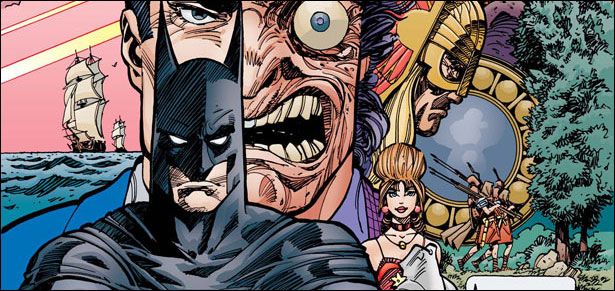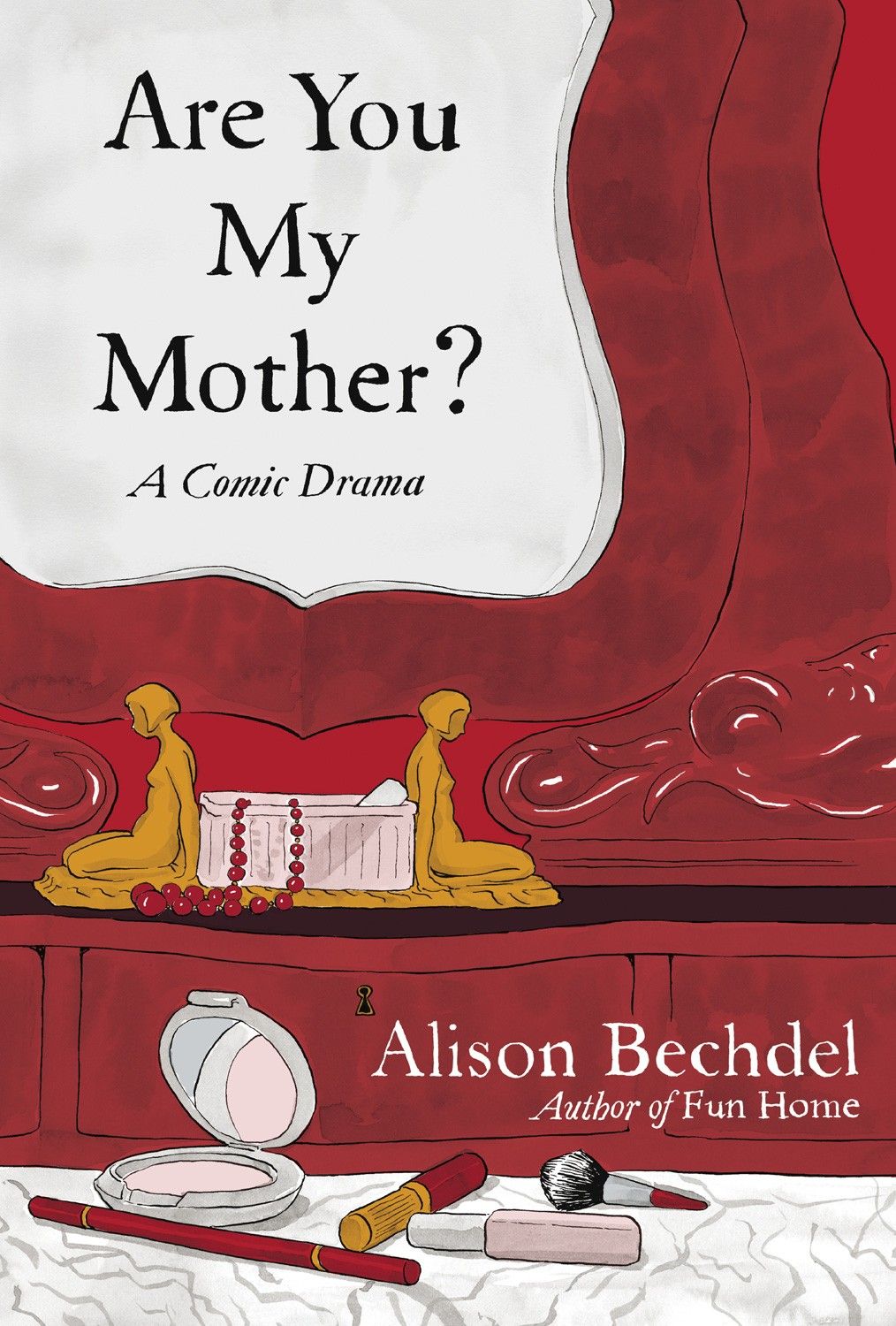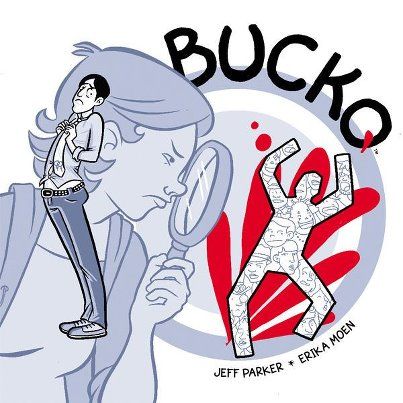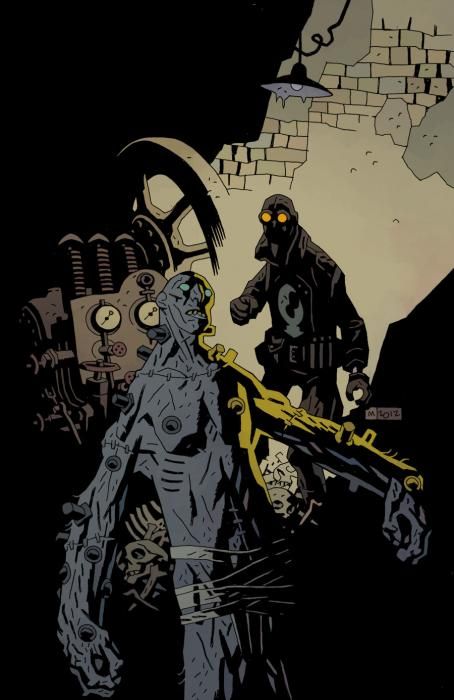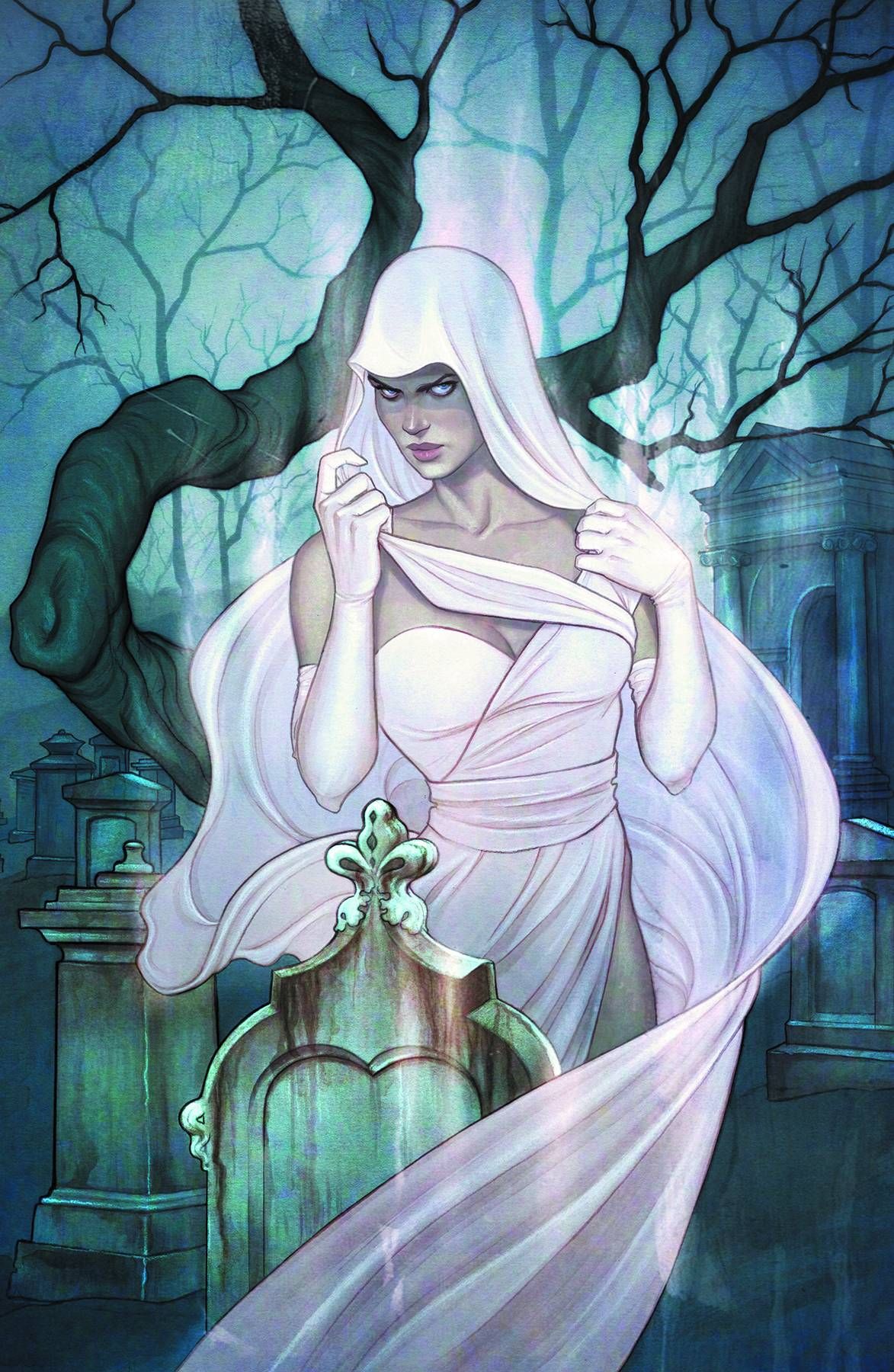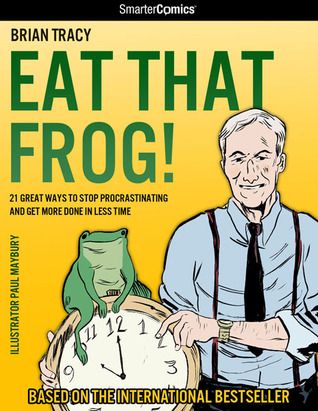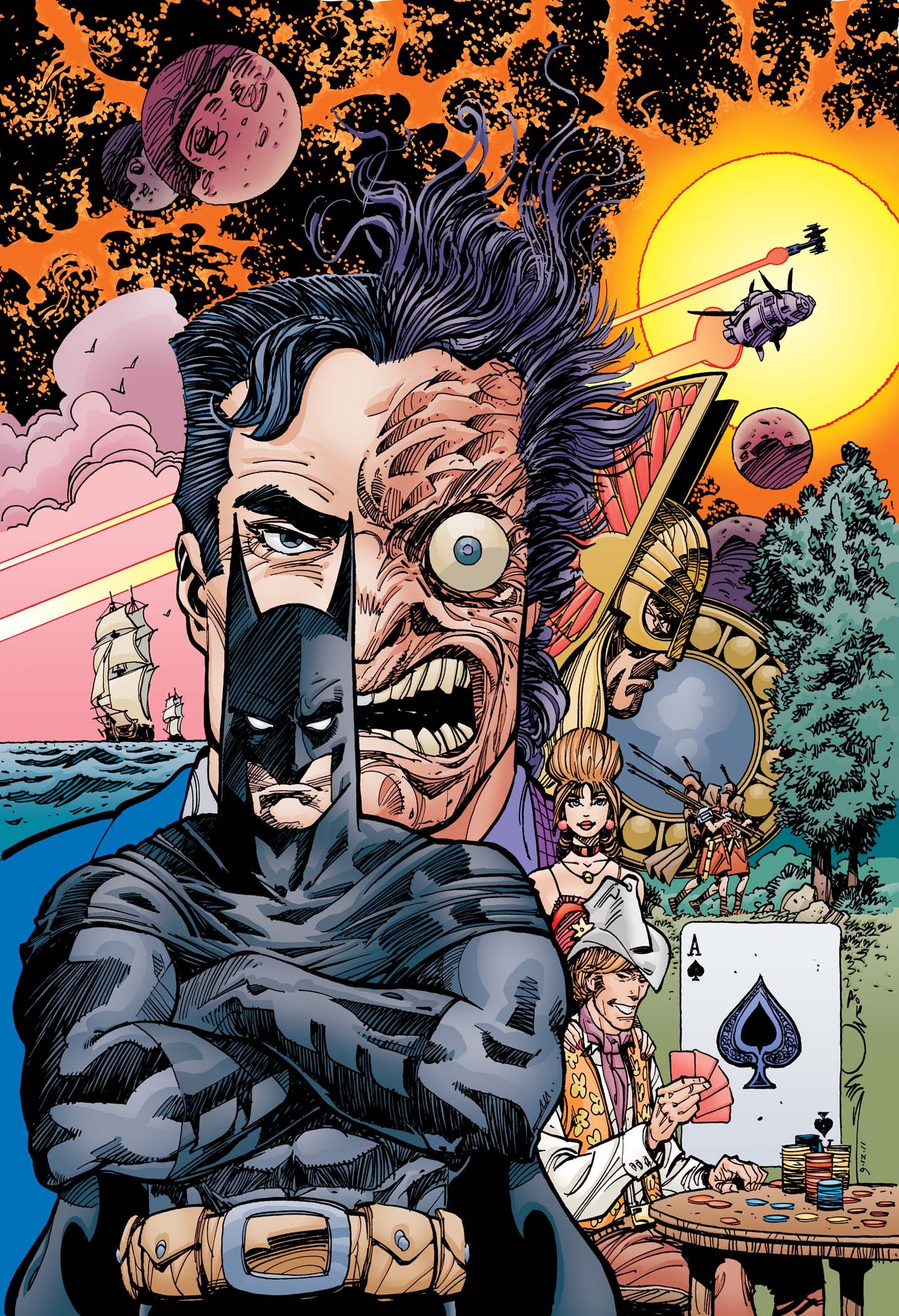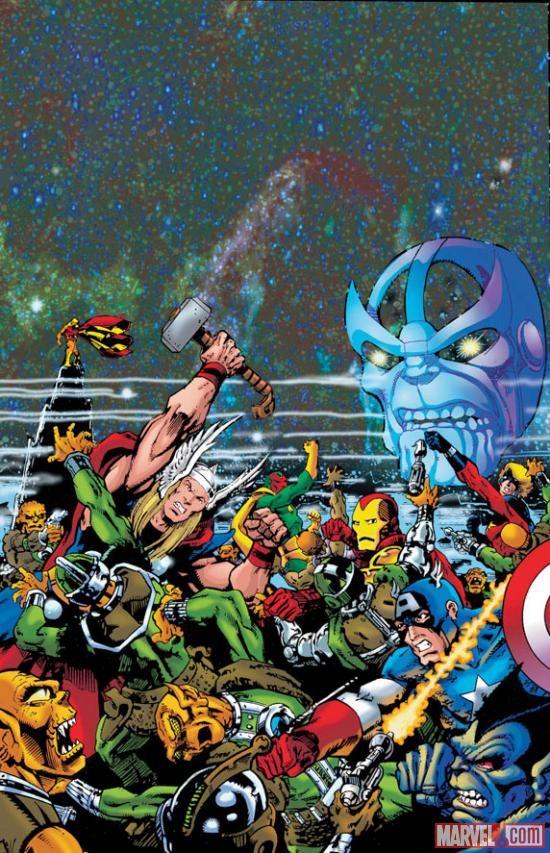Welcome to another edition of What Are You Reading?, where today we welcome special guest Ron Marz. Marz has written everything from Green Lantern to Witchblade, and you can currently find him working on comics like Artifacts, Prophecy, Blackburn Burrow and The Ride: Southern Gothic. He also writes the column Shelf Life for Comic Book Resources and can be found on Twitter.
To see what Ron and the Robot 6 crew have been reading, click below.
*****
Brigid Alverson
When you write about comics, there are certain books you just have to read, so this week I tackled Alison Bechdel's Are You My Mother? I am sorry to say I didn't finish it. No, wait, I'm not sorry. Here's the thing: For some reason, Bechdel has become very interested in psychoanalytic theory. I'm not a believer, so the book has little resonance for me. It's like reading a graphic novel about the ether theory—actually, that would be more interesting—or the scriptures of a religion I don't subscribe to. The narrative parts are well done, and her mother seems like an interesting character, in that quirky way that mothers often have in memoirs written by their grown children. Similarly, the dream sequences are good, but she follows them up with scenes of her discussing them with her therapist. It's the ultimate violation of the show-don't-tell rule, lecturing the reader on the mother-infant bond and the meaning of things rather than, you know, constructing a story where these things shine through. In short: Too much talk, not enough action. Bechdel is capable of better, and I hope she revisits this material and takes another shot at turning it into a real story.
Top Shelf slipped me a preview copy of Diana Thung's August Moon, which is due out next month (the first 78 pages are also online at her site). It's a YA title that I think will have a lot of appeal to older readers as well. The basic conflict underpinning the story is a very familiar one: Outside developers come to a small, isolated Asian town and threaten the benign creatures that live there. In this case, the creatures are large, gentle animals that have the ears of a rabbit but the body of a bear. Through an odd sequence of events, one of them is shot and a scientist gets wind of it and comes to town to investigate. This is all about the kids, though—a quiet boy named Jaden, whose grandmother is a street vendor, and the scientist's daughter, Fiona. Thung's story is filled with little mysteries, mixing the everyday life of a Southeast Asian town with fantastical elements to make a very satisfying read.
Tom Bondurant
I had read the first part of Jeff Parker and Erika Moen's Bucko online, but didn't have time to catch up with it. Therefore, I was really looking forward to Dark Horse's new collection, and I was not disappointed. I keep wanting to call it an episode of "Three's Company" directed by Alfred Hitchcock, but that really doesn't do it justice. Bucko starts in a manic panic and spins out of control from there, sending its heroes on a twisty adventure involving murder, bicycles, e-commerce, and all manner of bodily fluids. Even better, the collection includes running commentary and lots of behind-the-scenes insights. I liked reading it online, I was excited to finish it up on paper, and I'll be glad to return for more.
As part of Top Shelf's incredible $3.00 sale, I picked up Jeffrey Brown's Incredible Change-Bots, the Transformers parody which stands pretty well on its own. I know only the Transformers basics, so I can't speak to how deep Brown's references go, but even as a barely-casual fan I found Change-Bots to be laid-back and affectionate in a Galaxy Quest kind of way. It's pretty much what you'd expect from a story about giant robots from a far-distant planet who can change into pretty precise replicas of Earth vehicles, and who come to Earth after voting irregularities leave their home in ruins. I also got Vol. 2, and am looking forward to reading it.
Finally, I dug deep into the paperback library for Stephen King's early-'80s survey of modern horror, Danse Macabre. I've read it several times over the years, but not in a while. Although it's thirty years old, I still appreciate his insights, from his vivid description of learning about "Spootnik" to the Apollonian/Dionysian dichotomy he applies throughout the book. (Of course he has some kind words about classic EC stories as well.) With October just around the corner, I'll be getting deeper into the horror genre myself.
It's the most wonderful time of the year!
Tim O'Shea
Lobster Johnson: Caput Mortuum: I love a week at the comic shop where there’s a surprise waiting for me. I had no idea there was going to be a Lobster Johnson one-shot released this past Wednesday. But when I saw the art was by Tonci Zonjic, I knew I was picking it up. One obstacle that writers Mike Mignola and John Arcudi put in Lobster’s way was that most of the action took place on a zeppelin (over the skies of 1932 New York), which meant he could not fire his gun without running the risk of a stray bullet blowing up the whole airship (due to all the hydrogen). Not sure if it was Mignola or Arcudi that early in the story snuck in a reference to the 1932 film, Merrily We Go to Hell, as a setup for a joke. But anytime I have to research 1930s films to enjoy a comic a little more, I am appreciative of the pop culture effort. (Sidebar, apparently this was one of many films that Cary Grant had a bit part in in 1932 [the first year he was in movies])
Avengers Academy #37: Writer Christos Gage has always danced along the line of the dark side with the kids in this book. In this issue, one of them crosses the line (not the first time it has happened). But with the series coming to an end, there is a greater finality to the line crossed in this issue. Gage constructed some great heroes with this series, but I question how many writers will effectively utilize the characters (and to such great success [from a writing standpoint, sadly not from a sales standpoint) as Gage has.
Bandette #2: No other comic book shows a hero fighting crime with such whimsy. I love how a simple game of baseball is used in this issue to foil a getaway. Creative team Paul Tobin and Colleen Coover clearly have absolute storytelling freedom by going digital. It seemingly allows them to take small storytelling moments (that work) which might be edited out in a traditional print indie comic. Case in point in this issue, when Bandette calls the Urchins (her network of supporters) to thank them for their assistance. I loved that Tobin and Coover devoted a few panels to that. It did nothing to establish the plot, but it effectively conveyed part of why Bandette fosters such loyalty. If you have not checked the story out, I have one question to ask—how can you pass up on a 99 cent comic with delightful full color Coover art?
Legends of the Dark Knight #16: Anyone who read my interview with Jeff Parker and Gabriel Hardman from this past Monday will know I was preloaded to love this story. Imagine an action packed Batman story where all the dialogue is said by everyone else in the story other than Batman. All Batman does is act—and not surprisingly with art by Hardman, strike fear into the heart of the criminals. "Gotham Spirit" (the name of the tale) is a great piece incredibly colored by Elizabeth Breitweiser (her skies are always something to behold). It’s doubtful the two creators have the time to collaborate on more Batman at present, but maybe if we are lucky it will happen again someday.
Michael May
It's been a slow reading week while I'm working on a couple of projects, but I did squeeze in two zero-issues: Ghost and Wonder Woman. Ghost in particular served its purpose to get me excited for Kelly Sue DeConnick and Phil Noto's four-part mini-series that's following it. I never read Ghost back in the day - except for that one crossover she had with Hellboy - but I always dug the image of a ghostly Lady in White who carried a couple of automatic pistols. She doesn't use the guns in this version, but she's no less deadly and I like the mystery that DeConnick has set up around her.
It wasn't designed to act the same way, but Wonder Woman #0 also has me eager to catch up on that series. Azzarello's the last person I would've expected to write a great homage to the Silver Age, but he pulled it off and struck a nice balance between goofy and gravitas. I know that the rest of the series doesn't have the same tone, but I'm still primed to dig into it.
Corey Blake
Little Nothings: My Shadow in the Distance by Lewis Trondheim: This is his fourth collection of daily journal comics from the great Lewis Trondheim but the first I've read. Each page is a new entry. Much of it reflects on his extensive traveling, either on vacation with or without the family, or on book tours to promote his work. He also deals with a medical issue that surfaces while traveling and generally reflects on small moments of absurdity, curiosity and beauty. It was really a joy to read and had me laughing throughout. He's great at landing on the punchline without ever overdoing it. His storytelling is clear but maintains an instantly recognizable style and gently expressive watercolors. The simple observations are human and relatable, but never feel like a tired Seinfeld routine. Credit should also go to Joe Johnson's English translations and Ortho's lettering for maintaining Trondheim's voice and style. Many of the pages have been serialized on NBM Publishing's blog.
Eat That Frog!: 21 Great Ways to Stop Procrastinating and Get More Done in Less Time by Brian Tracy and Paul Maybury: SmarterComics presents a bit of a dilemma for me. I love the expanding non-fiction sector of comics. But I generally do not like self-help books, which is a lot of SmarterComics' focus. They also lean toward adapting to a light read for "people on the go." There's nothing wrong with that approach, but I can't help but think it unintentionally reinforces the notion that comics are a simplistic Cliff's Notes way to digest information without having to read a "real" book. But I wanted to give them a chance, and when they sent me an advance copy, that seemed like a good opportunity. Eat That Frog! is a 60-page adaptation of Brian Tracy's 128-page book. The basic premise to defeat procrastination is to "eat the frog" or get the worst, ugliest, biggest task out of the way at the start of each day, and then focus on other tasks that are less daunting. It's a fine idea, but this sort of simplistic answer to someone's ingrained lifelong approach to work is the kind of thing that makes self-help books so ineffective to me. It's only slightly more helpful than "just do it," as though the notion of completing a task early never before occurred to someone who struggles with procrastinating. Another portion suggests the reader imagine that tomorrow they're going on a big vacation but they have to get all of their work done before they leave - in essence, make a game out of getting something done. If compulsive procrastinators could make work into a game or fool themselves into a non-existent reality, they would never have procrastinated in the first place. Despite cutting the book's page count in half, it ends up feeling repetitive with no discernible structure. But that doesn't mean there aren't a few good tips and observations within, such as his 80/20 theory and the technique of a weekly list of tasks to cross off. So the saying of "take what you like and leave he rest" probably generously applies here. Perhaps it's a flaw of the genre but most of the book only broadly address the business world in very general office settings instead of specific industries or jobs, or even individuals' habits. This makes concrete and practical tips too few and far between. Paul Maybury's illustrations are loose, lively and spontaneous, and some of the visual metaphors he provides are amusing, but sometimes it gets a little too loose and might feel sloppy for some readers.
Tarantula by Mark Kalesniko: Apparently I'm on a bit of a Mark Kalesniko bender: Freeway last time and now this 40-page short story. Fantagraphics has a quaint approach to webcomics that somehow seems to suit the publisher. They've embedded what appears to be a PDF reader, so you scroll through the whole thing. Even so, the story is hilarious and depending on your level of fear of spiders and other creepy-crawlies, should definitely get you squirming. I love the approach of using a super-detailed illustrative style for the spider juxtaposed with the more simplified and cartoony look of the main character Alex. There's also an unexpected but all too human evolution of Alex's relationship with the spider that is really priceless. It's a real hidden gem.
Ron Marz
I have to admit, I don't get to the comic shop anywhere near as often as I should. I have three "local" shops less than an hour away: Earthworld in Albany, Comics Depot in Saratoga Springs and Excellent Adventures in Ballston Spa. More often than not, I pick up collected editions because I'm running behind on the monthly issues. But even so, there's some stuff I try to keep up with in singles.
The Judas Coin by Walter Simonson and Lovern Kindzierski. I'm fortunate enough to have been seeing pages from this for a few years now, thanks to Walter giving me sneak peeks at the oversize originals at conventions. This is breathtaking stuff, a master doing what he does best. Walter stretches both his style and his storytelling, encompassing everything from a newspaper strip to manga, and paying homage to Hal Foster, Joe Kubert, Nick Cardy, Druillet and Shirow. Yet it's all still Simonson. Glorious.
Rocketeer: Cargo of Doom by Mark Waid, Chris Samnee and Jordie Belaire. I love the Rocketeer, and I love this series, just as I loved Rocketeer Adventures before it. I'm a huge fan of period comics, especially stuff set in the '30s and '40s. Engaging characters, clever story, gorgeous artwork. That's what you should deserve from any comic. Waid and Samnee do this other book you might've heard of. It's called Daredevil. That one's pretty damn good too.
Punk Rock Jesus by Sean Murphy. We obviously already knew Sean was a great artist. Here's where we learned he's also a terrific, risk-taking writer. Jerk. I think it's safe to say there's nothing else like this on the stands. Really happy PRJ was printed in beautiful black and white. Wish we had more black-and-white books.
Thanos: The Final Threat by Jim Starlin. A repackaging of one of my favorite stories of all time, the Thanos-Warlock conflict as it played out in Avengers Annual #7 and Marvel Two-in-One Annual #2. I still remember my reaction, reading it as a kid, discovering that villains and even heroes could actually die. I've got the original issues somewhere, as well as the reprints, the Masterworks hardcover ... and yet I still needed this new version. Guess that means it's really good.
Lobster Johnson: Caput Mortuum by Mike Mignola, John Arcudi, Tonci Zonjic and Dave Stewart. I'm a huge fan of period comics, especially stuff set in the '30s and '40s ... wait, I already said that. I keep up with all the "Mignola-verse" books: Hellboy, BPRD, Baltimore and assorted specials. But I especially love Lobster Johnson for its pulp roots. This one's got a dirigible and Nazis!

